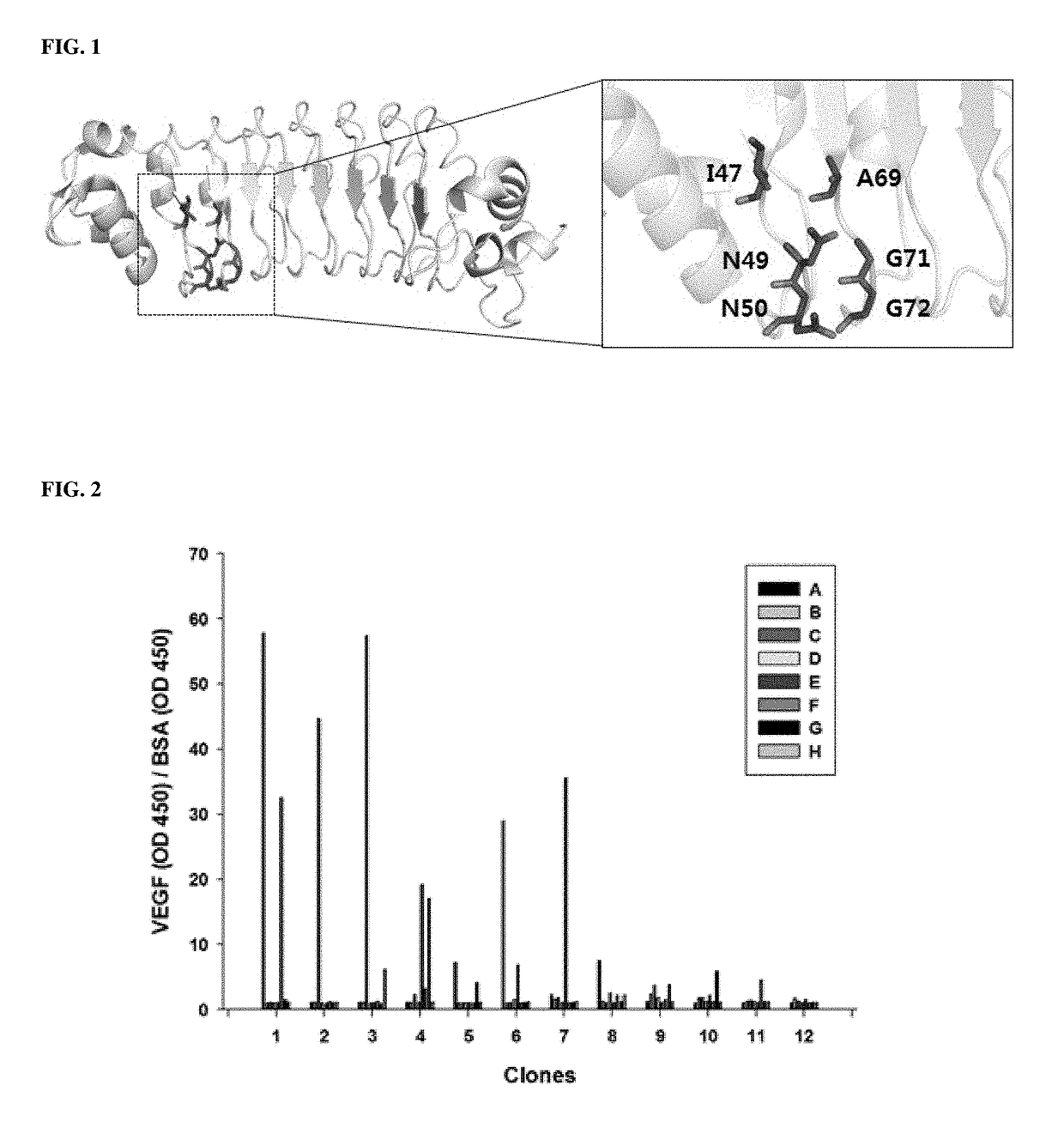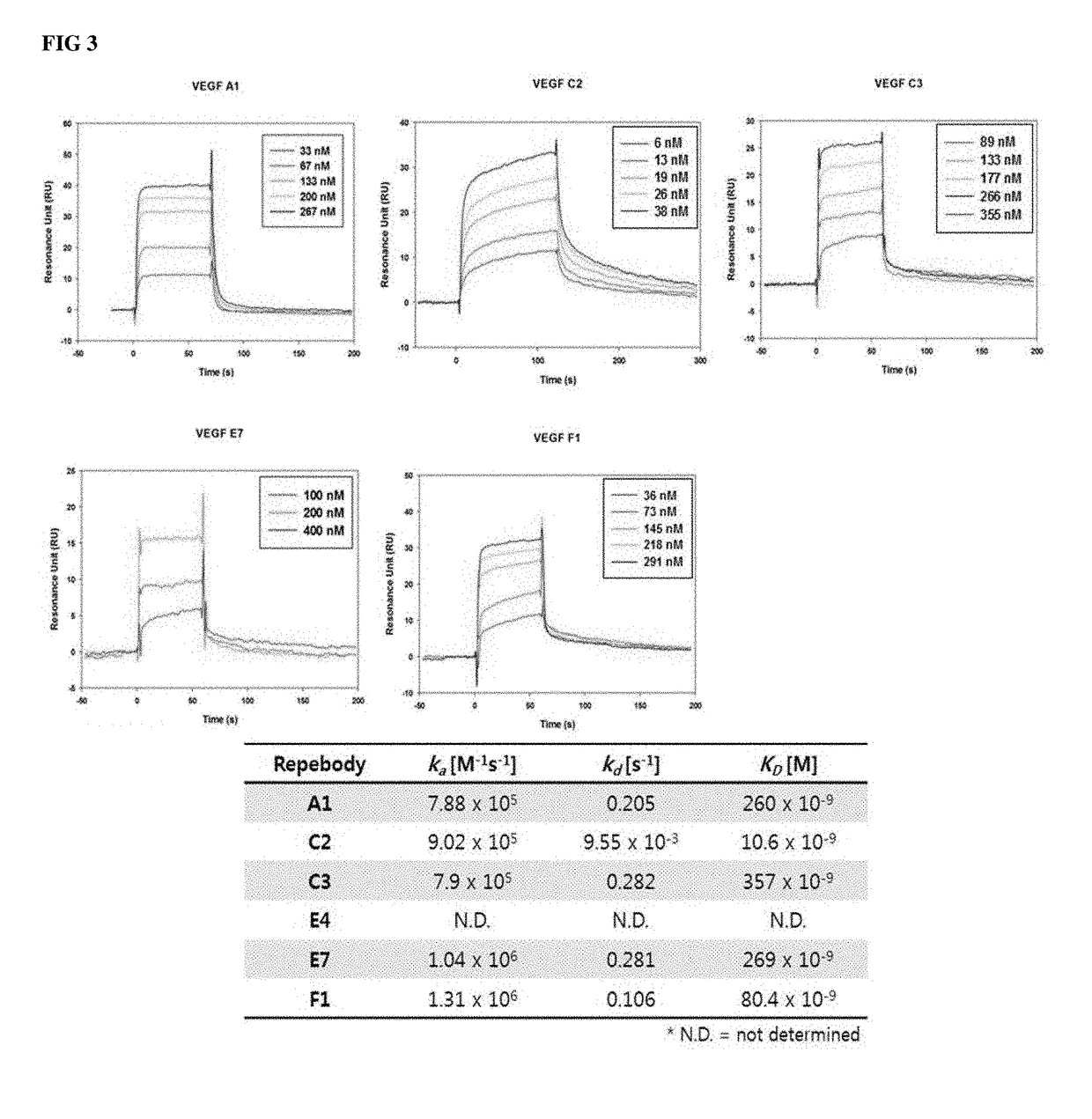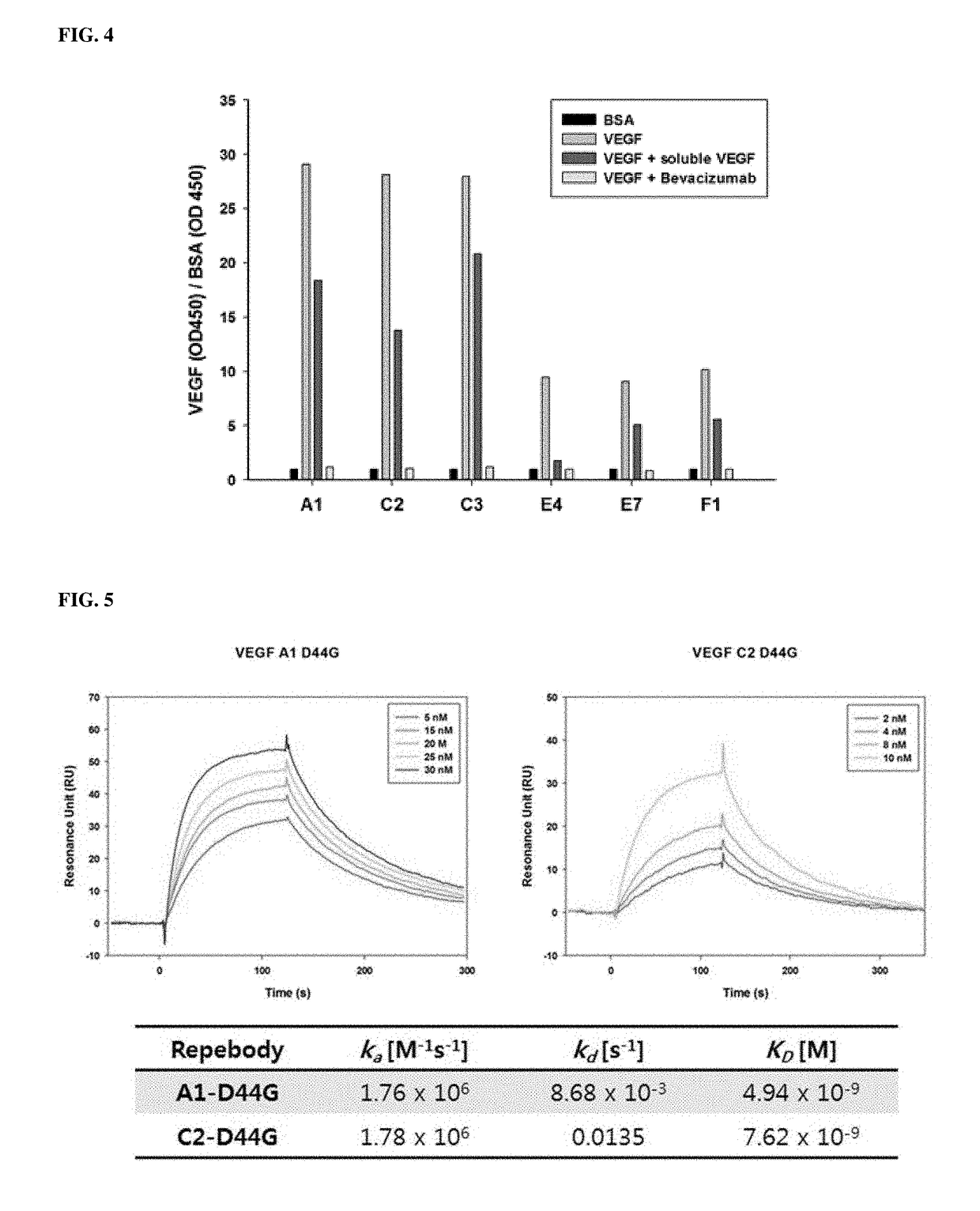Novel polypeptide capable of binding to vascular endothelial growth factor, and use thereof
a technology of vascular endothelial growth factor and polypeptide, which is applied in the direction of peptide/protein ingredients, peptide sources, drug compositions, etc., can solve the problems of high production cost, difficult to escape existing patent barriers, and difficult to penetrate into cells
- Summary
- Abstract
- Description
- Claims
- Application Information
AI Technical Summary
Benefits of technology
Problems solved by technology
Method used
Image
Examples
example 1
Construction of Repebody Library Based on Protein Structure
[0067]Repebody consists of continuously connected repeat units having a conserved leucine sequence, similar to LRR proteins present in nature. The repebody has a modularity maintaining the overall protein structure and a structural characteristic in that it is divided into a concave region and a convex region due to the shape curvature of the overall structure. A hypervariable region like a complementarity determining region (CDR) is positioned in the concave region to mediate a protein-protein interaction. In addition, the convex region plays an important role in maintaining the overall structure of a repebody based on the well conserved LRR sequence. The protein structure of the repebody was analyzed and a random library was designed in the following manner
[0068]Specifically, six amino acid residues 47, 49, 50, 69, 71 and 72 positioned in the concave region of two continuous modules (LRR1 and LRRV1 modules) positioned at t...
example 2
Selection of Polypeptides, Which Bind Specifically to VEGF, by Use of Random Phage Library
example 2-1
Selection of Polypeptides, Which Bind to VEGF, through Panning of Repebody Library
[0072]Using the library constructed in Example 1 above, polypeptides capable of binding to VEGF were selected and purified. In order to select candidates capable of binding to VEGF, 100 μg / ml of VEGF was coated on an immune-tube at 4° C. for 12 hours. The coated tube was washed three times with PBS, followed by blocking with a PBS solution (TPBSA) containing 1% BSA and 0.05% Tween 20 at 4° C. for 2 hours. Thereafter, 1012 cfu / ml of the purified phage was added to the coated tube and was allowed to react at room temperature for 2 hours. After the reaction has been completed, the unbound phages were washed five times with a PBS solution (TPBS) containing 0.05% Tween 20 for a total of 2 minutes, and then washed twice with PBS. Finally, 1 ml of 0.2 M glycine-HCl (pH 2.2) was added to the immune-tube, and allowed to incubate at room temperature for 13 minutes to elute the VEGF-bound phages, displayed on the...
PUM
| Property | Measurement | Unit |
|---|---|---|
| temperature | aaaaa | aaaaa |
| temperature | aaaaa | aaaaa |
| pH | aaaaa | aaaaa |
Abstract
Description
Claims
Application Information
 Login to View More
Login to View More - R&D
- Intellectual Property
- Life Sciences
- Materials
- Tech Scout
- Unparalleled Data Quality
- Higher Quality Content
- 60% Fewer Hallucinations
Browse by: Latest US Patents, China's latest patents, Technical Efficacy Thesaurus, Application Domain, Technology Topic, Popular Technical Reports.
© 2025 PatSnap. All rights reserved.Legal|Privacy policy|Modern Slavery Act Transparency Statement|Sitemap|About US| Contact US: help@patsnap.com



